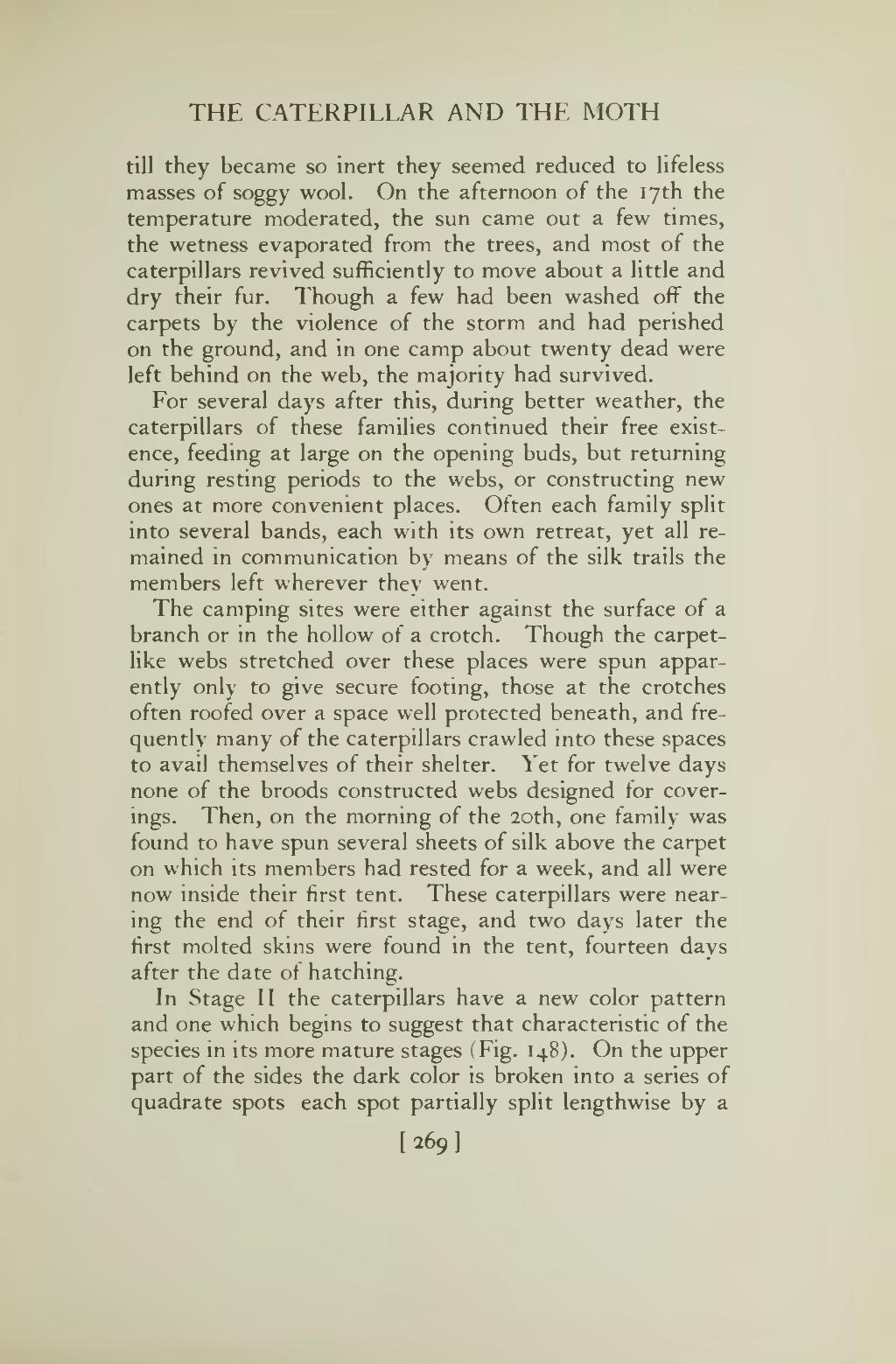CATERPILLAR AND THE MOTH
till they became so inert they seemed reduced to lifeless masses of soggy wool. On the afternoon of the ?7th the temperature moderated, the sun came out a few rimes, the wetness evaporated from the trees, and most of the caterpillars revived sufficiently to more about a little and dry their fur. Though a few had been washed off the carpets by the violence of the storm and had perished on the ground, and in one camp about twenty dead were left behind on the web, the majority had survived. For several days after this, during better weather, the caterpillars of these families continued their free exist- ence, feeding at large on the opening buds, but returning during resting periods to the webs, or constructing new ones at more convenient places. Often each family split into several bands, each with its own retreat, yet all re- mained in communication by means of the silk trails the members left wherever they went. The camping sites were Cther against the surface of a branch or in the hollow of a crotch. Though the carpet- like webs stretched over these places were spun appar- ently only to give secure footing, those at the crotches often roofed over a space well protected beneath, and fre- quently many of the caterpillars crawled into these spaces to avail themselves of their shelter. Yet for twelve days none of the broods constructed webs designed for cover- ings. Then, on the morning of the ?oth, one family was round to have spun several sheets of silk above the carpet on which its members had rested for a week, and all were now inside their first tent. These caterpillars were near- ing the end of their first stage, and two days later the first molted skins were round in the tent, fourteen davs after the date of hatching. In Stage II the caterpillars have a new color pattern and one which begins to suggest that characteristic of the species in its more mature stages (Fig. ?48). On the upper part of the sides the dark color is broken into a series of quadrate spots each spot partially split lengthwise by a
[ ?69 ]
INSECTS
